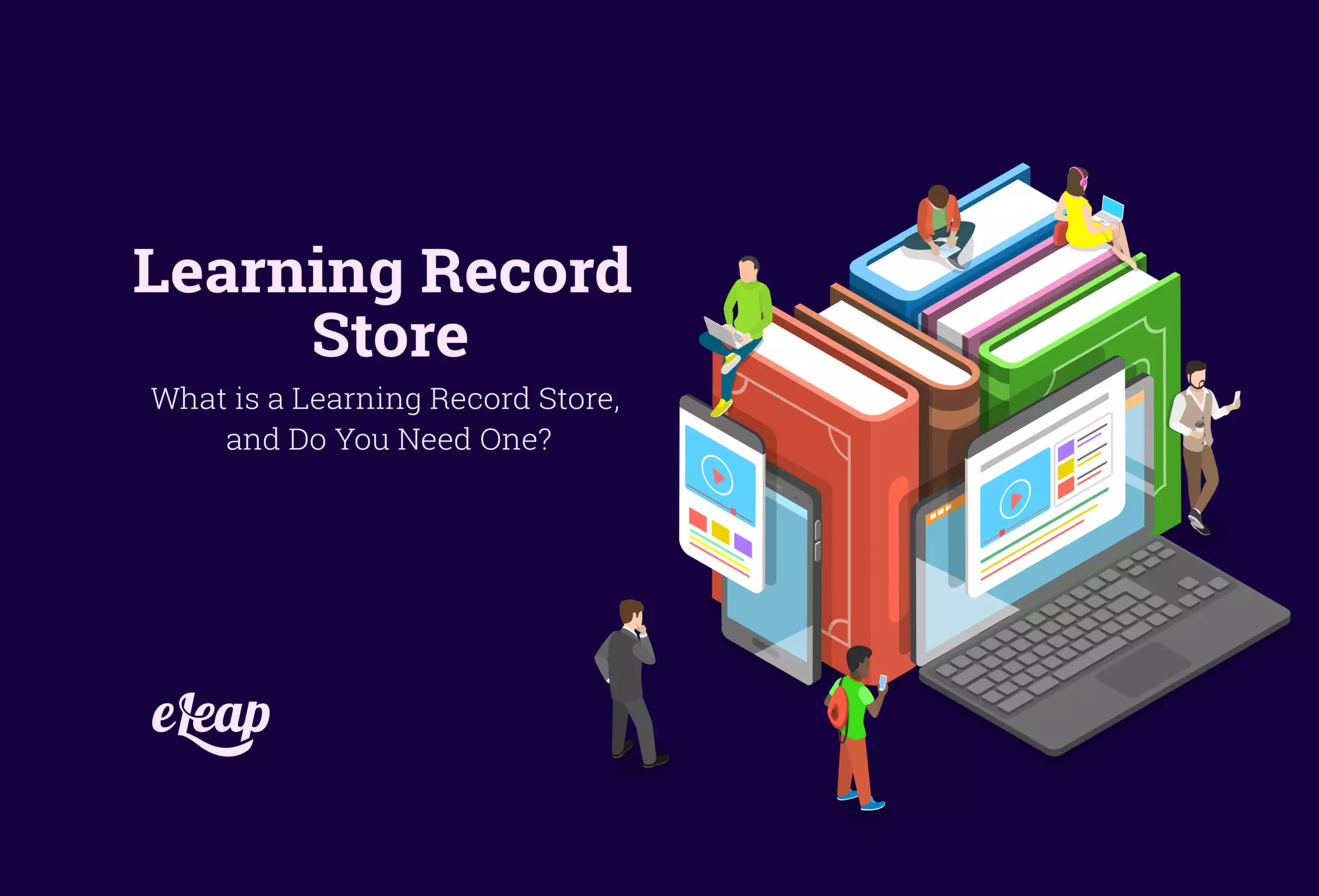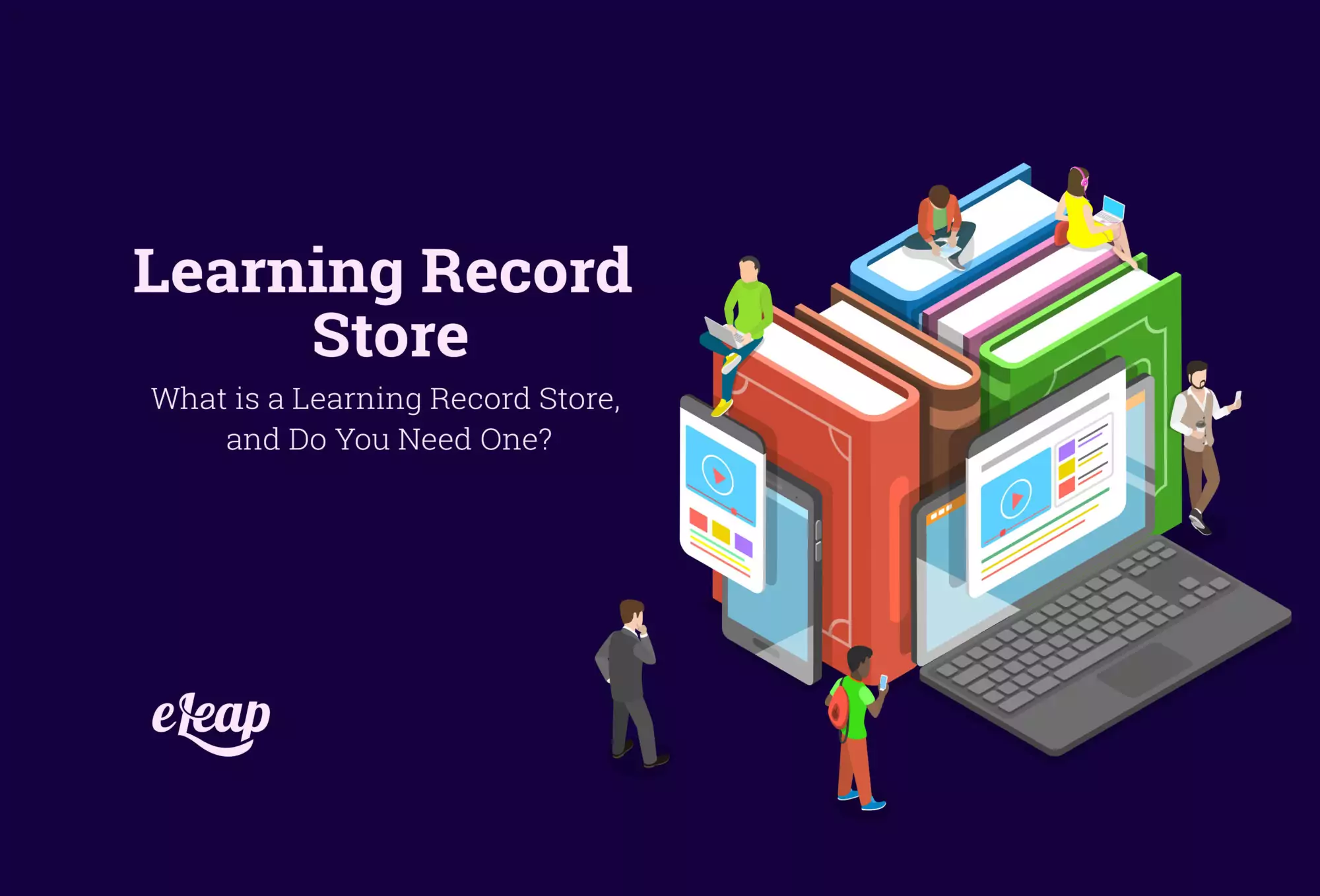Learning Record Store
What is a Learning Record Store, and Do You Need One?

A learning record store, or an LRS, is a developing technology in the world of eLearning. It is a database that stores every bit of data from the learning ecosystem that you use in a specific format. There are many benefits of using an LRS, but it may not be necessary for all organizations. Here is what you need to know about this tool.

What Does a Learning Record Store Do?
Saying that a learning record store is a database that collects data from your organization’s training or education ecosystem may not sound very impressive. After all, you can typically access stored data within your LMS natively – why do you need another storage system?
The key feature that makes an LRS so exciting and useful is the format in which it stores data. LRS databases use the xAPI format. This data format is straightforward and looks like this:
“User + Verb + Object”
That means that data is already broken down into very easily understood chunks for you when you review it. For example, a learning record store may have data that looks like this:
“Bob White watched Training Video #4.”
“Sue Brown searched for “communication” in the LMS.”
“Harry Green shared this article in the “PR Team” communication channel.”
These are straightforward examples of what a learning record store can write in its database.
What Are the Benefits of a Learning Record Store?
Knowing that you will get data in easily digestible chunks is a great start. But what else makes an LRS a good tool?
One of the critical features of an LRS is that it can collect this data from any educational source you use. It can gather data from the learning management system you use, an LXP, or from external learning platforms. Here are some platforms and applications that an LRS can collect data from:
- Your CRM platform
- Social Networks
- Video Content Platforms, such as YouTube
- Educational Websites
There are as many platforms and applications that an LRS can connect with as you can imagine, and the technology advances all the time to allow for more use.
Another benefit of a learning record store is the progression of technology. With the xAPI format, data can only be stored based on the available verbs within the format. But that list is constantly expanding to allow for increasing complexity. For example, you don’t only have to record that an employee finished a training course; now, you can also include the data that the employee requested feedback on their final project.
This allows you to better capture the flow of your training program, even across multiple different educational resources. That is a significant benefit because you can work to streamline and improve your training program in the future with that data. You can identify where bottlenecks occur and eliminate those as well.
Migrating and Reporting Data is Easier with a Learning Record Store
A learning record store also gives you highly flexible data. It is effortless to report data when it is presented simply. There are LRS platforms that convert data into visuals, called learning analytics, as well.
Data migration is another benefit of using a learning record store. When you choose to use an LMS for your data storage, that data is often kept on the LMS platform. With an LRS, you can usually export the data easily from one learning management system to another. The use of a standardized language like xAPI makes this process much more manageable.
What Can’t a Learning Record Store Do?
It’s important to understand that a learning record store only exists to receive, store, and present data in xAPI format.
Here are some things that an LRS cannot do:
- It cannot help you manage your learning content.
- It cannot deliver learning content to your organization.
- It does not offer any activities for learners.
- It doesn’t offer certifications.
- It is not a user management tool.
- There are no social features.
In short, an LRS cannot do any of the things that an LMS is designed for. LMS products may incorporate an LRS into their design, but the two are very different tools. If you are asking yourself if you need an LRS, understand that this tool will not do anything for you if you don’t have educational platforms or tools already in place.
Do You Need an LRS?
With the introduction of the learning record store to the world of eLearning, there came the inevitable question: Do you need an LRS? The answer ultimately depends on the objectives you have for your training program.
Do you need to track learning activities across multiple sources for multiple team members? If the answer is yes, then you could benefit from a learning record store. This tool will allow you to capture every activity that an employee does on any learning tool they use, and it will present you that information in straightforward statements.
You’ll then be able to analyze and report that information in whatever ways you need to support your objectives.
It makes sense to invest in these tools if you have lots of learning activities across many tools. If all of your team’s education is on a single platform, it may not make sense to invest at this time. Instead, you may be better served by the native data reporting within your LMS.
Combining an LRS and LMS
If you aren’t sure if you need a learning record store along with your existing Learning Management System, consider that you can combine the two. You can continue to encourage your team to use the LMS for education and training. Connect the LMS to the LRS you’ve chosen, and let the data collect. If you’ve struggled with the data presented in your LMS, you may find that this combination helps you understand what your team is doing.
As the technology improves, the learning record store is likely to become a necessary tool in the world of eLearning.